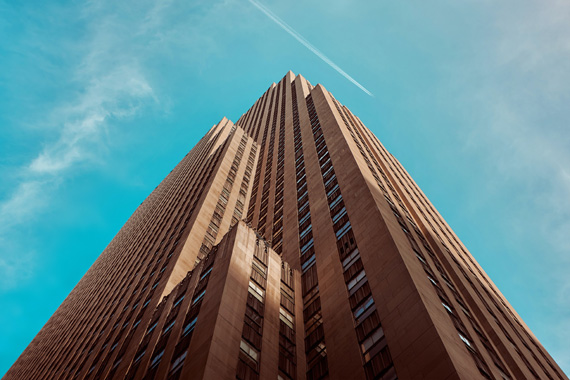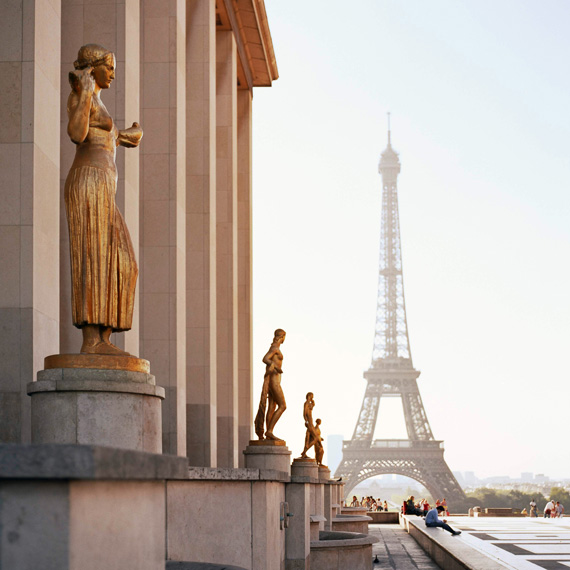In this article I will try to explain how perspective works in a 2D photograph with some tips, myths, and example photos.

Photo by Anders Jilden
When we see a photograph on computer screen or in print, we’re looking at a 2-dimensional representation of a real 3-dimensional scene. And that is what photography is all about—capturing a 3D scene in a 2D image. I used to wonder how photographers demonstrate depth or sense of scale in a (good) photograph. They use the concept of perspective.
This is one of the tricky areas of photography, which if a photographer is not consciously aware of, can produce unwanted distortions or flat, uninteresting images.
3D is real. A 2D depiction of a 3D scene is just an illusion exploiting how our brain synthesizes information to determine the “depth” in real-time. Powerful compositions can be created by applying the concepts of perspective in effectively converting a 3D scene into a 2D translation.
Defining Perspective
Perspective in photography can be defined as the sense of depth or spatial relationships between objects in the photo, along with their dimensions with respect to the viewpoint (camera lens or the viewer).
Now let’s come down to the techniques.
I. Blocking, Overlap, or Obstruction
This is probably the dumbest thing to tell you. But let me tell you anyways. When we see an object blocking the view of another object, the first object is nearer to the viewer than the latter.
This clue to our brain regarding distance can be utilized in a photograph to depict the depth or distance between the objects, also called overlap perspective. If this overlap is repeated in the same picture, the viewer gets a sense of depth among various objects lying in a 3D reality through the perception of the relative distance of objects made by partial blocking and hiding.

Photo by M Reza Faisal; ISO 200, f/7.1, 1/250-second exposure.
II. Relative Size
Our brain is very complex but gets fooled easily. We have a notion that when an object becomes more distant, it appears smaller than the one which is closer to the viewer.
In reality, our brain has encodings of the “natural” size of different objects, like trees, cars, people and animals. So when we see a person twice as big as building, we cannot rationally conclude that the person is actually twice as big in reality. Our brain tells us that the building is farther away. Alternatively, when we carefully place different objects at different distances but give an illusion that they are in the same plane, we produce funny images.

Photo by Siebe Warmoeskerken; ISO 400, f/2.8, 80mm.
So in a nutshell, our brain makes an evaluation of the sizes based on known objects in relation to other objects in the photo. Thus a distance is imagined in the brain and creates the depth in the photo that the photographer is looking for. This is also called scaling—it helps the viewer to determine the actual size or relative size of the objects in the picture.
III. Linear, Rectilinear, and Vanishing Point
As already mentioned, a 2D image is nothing but an illusion of a 3D scene, but nevertheless artists and photographers utilize this illusion effect as an important compositional factor in their works.
The human eye judges distance by the way lines and planes converge at an angle. This is known as linear perspective.
When expanded to rectangular objects, you find that some lenses (fish-eye and panoramic) produce objects at the sides much smaller than they are and the objects at the center much larger that their actual size. Geometrically, all straight horizontal lines at the lens axis level are represented as straight lines, and all other straight horizontal lines—either above or below the lens axis level—are reproduced as curved lines. But with “rectilinear perspective” the straight lines in the subject are reproduced straight in the picture (normal lenses are rectilinear lenses), which is way we see things normally.
It is noteworthy to mention that any photo is subject to “perspective projection distortion”, which can be controlled and corrected with various methods that I will describe in Part II of this series.
The fish-eye and panoramic lenses produce “false” perspectives and are used only to produce special effects on purpose (more on this in Part II: Playing with perspective).

Photo by Several seconds; ISO 100, f/9.0, 1/500-second exposure.
So back to linear perspective. Lines that are parallel to each other when seen at a great distance give us the sensation of meeting (at vanishing points)—for example, in rail tracks. The converging parallel lines illusion can be used to show distance or depth in the photo.
IV. Lack of Sharpness, Color Quality, or Contrast
We’re accustomed to our eyes not being able to figure out objects in the distant far off due to lowering of contrast or scattering of light, or both. We can use this information to create the effect of lack of sharpness/contrast by controlling the depth of field. Now, controlling depth of field is totally different subject area in photography, and I don’t want to mix it with the current discussion of perspective control. But just for the sake of completeness, I can give you a quick hint: just focus your lens slightly shorter than infinity so that the farthest object looks blurred thus giving the viewers a sense of distance.
Also atmospheric conditions like haze/fog/dust can cause loss of image sharpness at a distant. Since the effect of this “haze” (scattering of light due to particles in the air) is proportional to the distance of the objects from the lens, we can use this information as well in composing the shot.

Photo by anjan58; ISO 320, f/8.0, 1/250-second exposure.
Of course, there are various different factors that contribute to varying atmospheric conditions but the result effect of reduction of contrast, brightness and saturation can make our eyes believe that we are looking at something really distant compared to the objects that are clear, sharp, and vibrant.
So next time you’re trying to compose a photo, before pressing the shutter, think again. Are you able to successfully illustrate the 3D-factor through any of the above mentioned illusion methods? In Part II of this article, I will explain the myth on perspective, zooming/framing, and distortion corrections.
About the Author:
Sudipta Shaw is a software professional and a self-made photographer. He also likes to teach and mentor.
Like This Article?
Don't Miss The Next One!
Join over 100,000 photographers of all experience levels who receive our free photography tips and articles to stay current:






Thanks for sharing with me
Painters call the effect of haze,fog mist dust etc stmospheric persoextive.
It is also wirth noting that veryixal lines posts, s
edges of buildings appear vertical unkess the cznera is tilted. This is a more reliable way of straitening a photo tha trying to use a horizon you csnt see. If you do hapen to tilt the damera upwards, the distirtion it causes can be disconcerting. Free form adjustments can be used to bring those vertical edges back to vertical correcting the distortion.
It was vary helpful with my concept art with the haze idea thank you vary much
Great article. It reminded me of some of the things I’d forgotten from A-level photography.
Where’s part two? I can’t finf it …
enjoyed your perspective on perspective. it provided some good food for thought as i try to contrast 2-d photography with 3-d photography and photographic phantograms for a new book i’m working on.